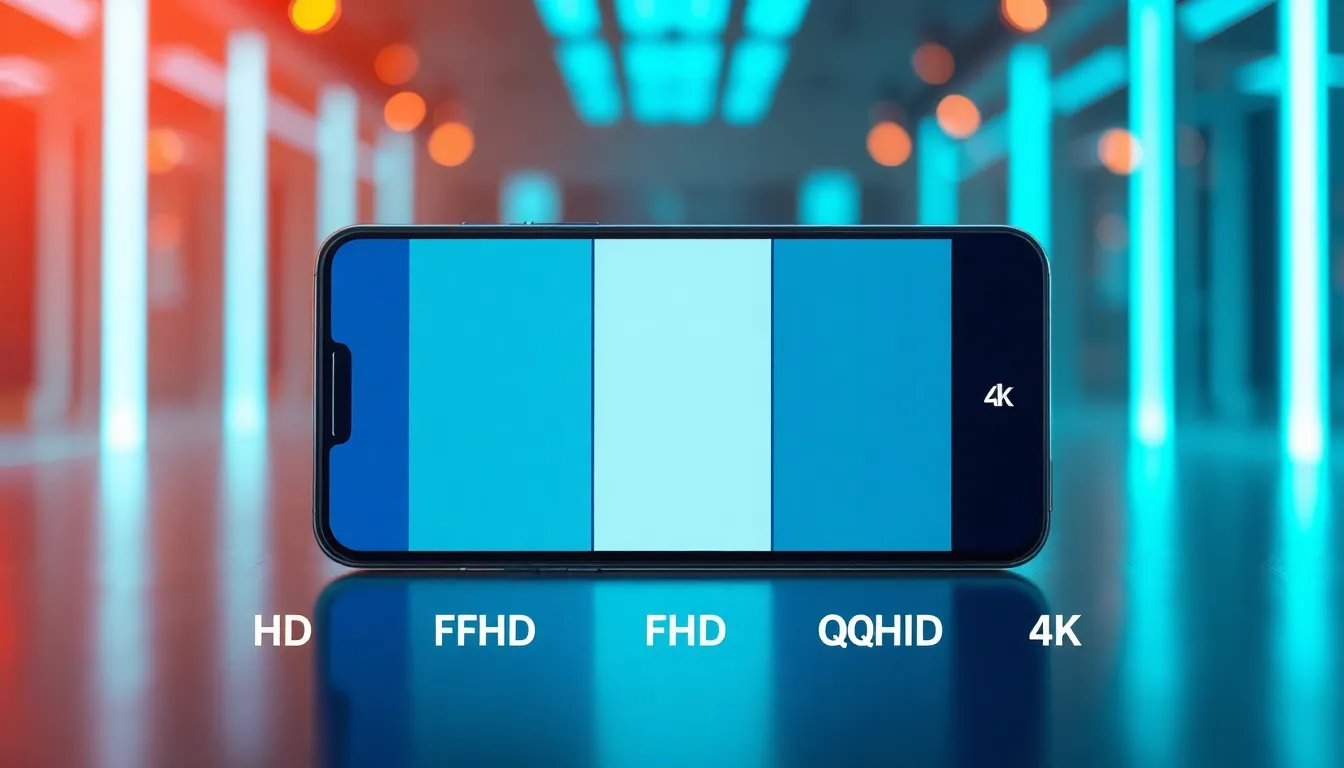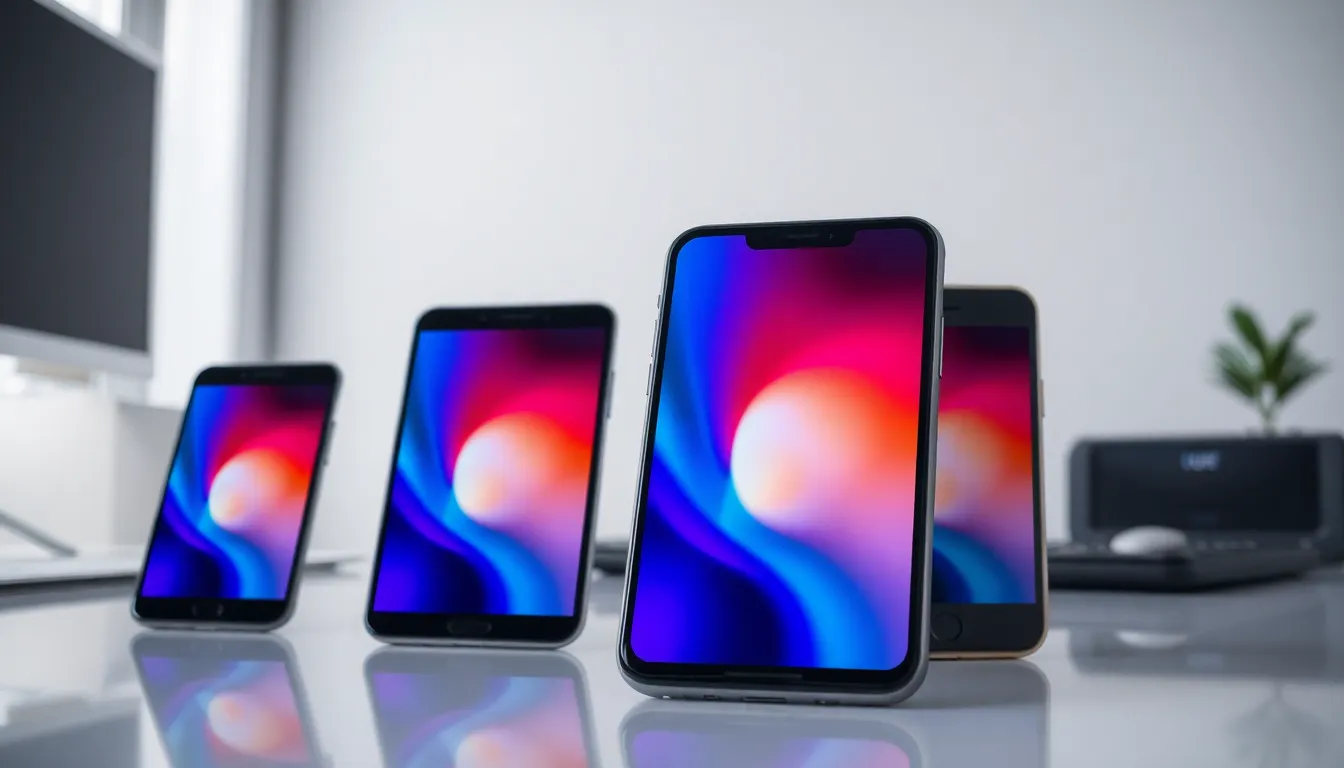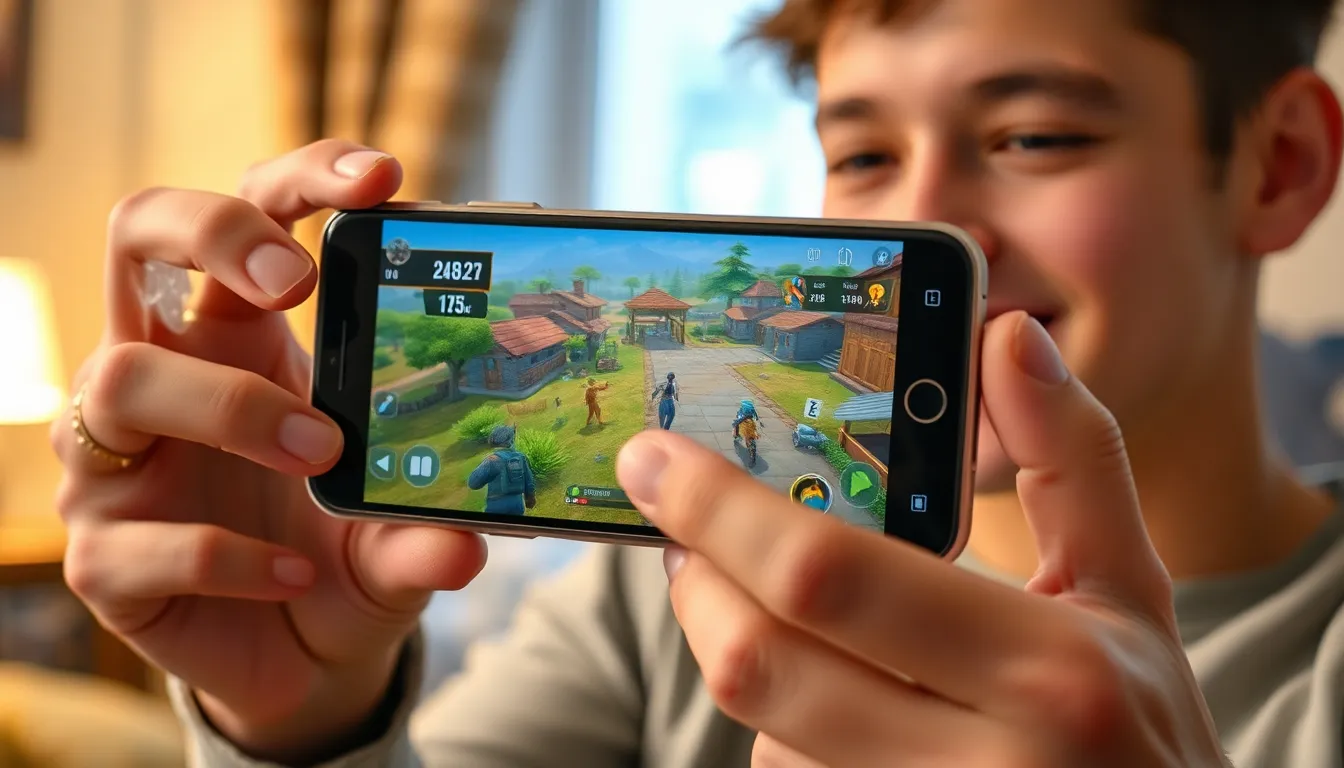In today’s digital age, phone screen resolution plays a crucial role in the user experience. With a myriad of devices flooding the market, understanding how resolution impacts clarity and detail can help consumers make informed choices. Whether it’s for streaming videos, gaming, or simply browsing social media, the quality of a phone’s display can significantly enhance or detract from enjoyment.
As technology continues to evolve, manufacturers are pushing the boundaries of screen resolution, introducing terms like Full HD, 4K, and beyond. Each advancement brings improved visual experiences, but it also raises questions about what resolution truly matters for everyday use. Delving into the intricacies of phone screen resolution reveals not just numbers and pixels, but the essence of how users interact with their devices.
Table of Contents
ToggleUnderstanding Phone Screen Resolution
Phone screen resolution refers to the number of distinct pixels displayed on the screen. This measurement impacts how clear and detailed visuals appear, influencing the overall user experience.
Definition of Screen Resolution
Screen resolution is defined by two primary dimensions: width and height, expressed in pixels. Common resolutions include:
- HD (1280 x 720): Offers decent clarity for basic tasks and media consumption.
- Full HD (1920 x 1080): Enhances sharpness, making it suitable for gaming and high-definition video.
- Quad HD (2560 x 1440): Delivers a superior viewing experience with increased detail.
- 4K UHD (3840 x 2160): Provides the highest clarity, ideal for streaming and professional graphics work.
Importance of Screen Resolution
Screen resolution plays a crucial role in determining visual quality. Higher resolutions lead to sharper images, improving activities such as:
- Gaming: Higher resolutions enhance visual clarity, creating a more immersive experience.
- Streaming: Clearer resolutions provide better picture quality for videos.
- Social Media Browsing: Enhanced detail makes photos and videos more engaging.
Understanding screen resolution helps consumers choose devices that meet their specific needs, ensuring an optimal digital experience.
Types of Phone Screen Resolutions


Phone screen resolutions vary significantly, impacting visual clarity and user experience. Below are the primary types of screen resolutions found in mobile devices.
HD (High Definition)
HD resolution measures 1280 x 720 pixels. This resolution provides decent clarity for basic tasks like texting and browsing. HD screens are suitable for users focused on everyday functions without demanding high graphical fidelity.
Full HD (FHD)
Full HD resolution stands at 1920 x 1080 pixels. This resolution offers sharp images and vibrant colors, catering to activities such as streaming and gaming. FHD has become a standard for mid-range devices, striking a balance between performance and cost.
Quad HD (QHD)
Quad HD resolution features 2560 x 1440 pixels. QHD provides even greater detail, enhancing visual experiences in games and videos. Premium smartphones often utilize QHD displays, appealing to users who prioritize high-resolution graphics.
4K and Higher Resolutions
4K UHD resolution, which measures 3840 x 2160 pixels, delivers stunning clarity and depth. This resolution is ideal for high-end devices and avid media consumers, offering exceptional image quality during gaming, movie watching, and photo editing. Emerging technologies introduce even higher resolutions, pushing the boundaries of mobile displays.
Factors Affecting Phone Screen Resolution
Phone screen resolution depends on several critical factors that determine the overall quality and clarity of the display. Understanding these elements helps consumers choose devices that match their visual preferences.
Pixel Density (PPI)
Pixel Density, measured in pixels per inch (PPI), significantly influences screen clarity. Higher PPI values result in sharper images, enhancing the viewing experience, especially for detailed content like images and videos. For instance, a phone with a resolution of 1920 x 1080 and a screen size of 5.5 inches boasts a PPI of about 400, providing crisp visuals. In contrast, a lower PPI may lead to pixelation, reducing the quality of the display.
Display Technology
Display technology affects how images are produced and perceived. Various technologies, such as LCD, OLED, and AMOLED, offer unique benefits. LCDs generally consume more power but can provide brighter images, while OLED screens deliver deeper blacks and more vibrant colors. AMOLED displays are known for their high contrast ratios, enhancing overall clarity. Choosing a phone with advanced display technology can significantly impact the quality of visual content.
Aspect Ratio
Aspect ratio defines the proportional relationship between a screen’s width and height, influencing the overall viewing experience. Common ratios like 16:9 and 18:9 affect how content displays. A wider aspect ratio, such as 18:9, is increasingly popular for immersive video watching, while 16:9 remains common for traditional media. An appropriate aspect ratio enhances user engagement during activities like gaming, streaming, and browsing, making it crucial in assessing screen resolution.
Measuring Phone Screen Resolution
Measuring phone screen resolution requires understanding various metrics and using specific tools for accurate assessment. These insights help consumers evaluate device performance and visual quality effectively.
Resolution Metrics
Resolution metrics define the quality of a phone’s display. The primary metrics include:
- Pixel Count: Represents the total number of pixels horizontally and vertically, such as 1280 x 720 (HD) or 3840 x 2160 (4K UHD).
- Pixels Per Inch (PPI): Measures pixel density, with higher PPI indicating sharper images. For example, a device with 400 PPI displays more detailed content than one with 300 PPI.
- Aspect Ratio: Describes the proportional relationship of screen dimensions, like 16:9 or 18:9. This affects how content appears, particularly during media consumption.
Understanding these metrics assists users in choosing devices that align with their desired visual experiences.
Tools for Measurement
Several tools help in measuring phone screen resolution. They include:
- Display Testing Apps: Applications like Display Tester or Screen Resolution Tester allow users to assess their device’s resolution and pixel density directly.
- Online Calculators: Websites provide calculators to determine PPI based on resolution and screen size, giving users valuable information about their devices.
- Screen Testing Software: Programs such as AIDA64 or CPU-Z offer detailed specifications about display characteristics, including resolution and PPI.
Utilizing these tools ensures accurate measurements, allowing consumers to make informed decisions about device selection and performance evaluation.
Choosing the right phone screen resolution is crucial for an enhanced digital experience. With the variety of options available consumers can find a resolution that meets their specific needs. Higher resolutions not only improve clarity but also elevate activities like gaming and streaming to new heights.
As technology continues to evolve manufacturers are pushing the limits of what’s possible in mobile displays. By understanding key factors such as pixel density and display technology users can make informed decisions that align with their visual preferences. Investing in a device with the right screen resolution can significantly impact daily interactions and overall satisfaction.



